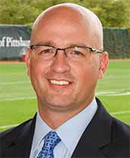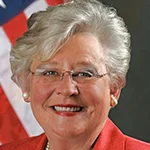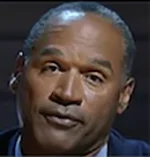Press practices of the Pittsburgh Steelers, which have won an award of Professional Football Writers of America, show that flow of information and flow of money are related. PR people can use this example to encourage clients to loosen their lips.
 Marshawn Lynch Marshawn Lynch |
Fan interest and patronage in many sports are setting records and one reason is the increased amount of information available via TV coverage including instant, slow-motion replays.
The latest Super Bowl, in which Seattle threw an interception on second down at the New England goal line, losing 28-24, was the most watched TV show in U.S. history, said NBC-TV. Audience was more than 114.4 million. The crucial play that perplexed many was shown numerous times in slo-mo.
Baseball has at last adopted an appeal process and we have seen a number of umpire calls reversed in recent weeks. Plays are recorded from multiple angles and played back in slow motion. Umpires in offices removed from the field view close plays from angles not available to umpires.
Football, basketball, tennis, golf, hockey and other sports are lavishing on their fans a banquet of information that is helping to build traffic.
 A public that is used to such a full plate of info and access to newsmakers is bound to be put off by companies and institutions that are not communicative and transparent.
A public that is used to such a full plate of info and access to newsmakers is bound to be put off by companies and institutions that are not communicative and transparent.
Current PR fashion is to emphasize story-telling. But stories not only need lots of facts but availability of principals for questioning.
Press Availability Mandatory in Sports
The 4,090-word, 22-point National Football League media relations policy starts with this sentence:
“Reasonable cooperation with the news media is essential to the continuing popularity of our game and its players and coaches.”
 Vines Vines |
Locker rooms must be opened to reporters 10-12 minutes after a game with “immediate access to all players and the head coach,” says the policy.
The head coach and at least one star player of the game must be presented for interviews “as soon as possible.”
Some NFL teams supply media access to players before and after practice on a daily basis. The NFL minimum is that there be 45-minutes of interview time on four days of the practice week.
All NFL players, upon request of their club PR director, are required to participate in weekly conference calls with the media from the opposing team’s city.
“Talk to Media,” Says Troop PR
Troop PR, Lanham, Md., is distributing a T-shirt with the words, “I talked to a reporter and I liked it.” Pamela Vines, president, retired U.S. Army officer who was its spokesperson at the Office of Chief of PA at the Pentagon, is urging all sports figures to follow the NFL guidelines.
Vines had a 24-year career with the Army. After advising general officers and top leadership in the military, she was a communications consultant advising civilian and military clients. She opened Troop PR in 2014.
Her advice is appropriate to public figures everywhere.
“Public figures have rights, too,” she says. “Foremost, they have the right to be respected by the media. But seemingly no media reps have disrespected any of the [football] players.”
Vines faulted Marshawn Lynch of Seattle for not being cooperative with reporters.
 Steelers PR chief Steelers PR chief Burt Lauten
|
Vines quotes the NFL media policy and notes that players receive annual media training sessions. New players get separate sessions. Failure to be responsive to reporters results in “more media training.
Steelers Win Rozelle Award
The Steelers PR unit, headed by Burt Lauten since 2011, also includes Dave Lockett as communications coordinator, Ryan Scarpino and Dom Rinelli. It won the Pete Rozelle Award of Professional Football Writers of America as the "best PR staff."
Pittsburgh Post-Gazette sports reporter Ed Bouchette said the Steelers PR staff works with reporters and offers “guidance when asked or even when not.”


 Southern governors claim they know what's best for their working class, and it's not pay raises... A Ukrainian human rights group played a key role in convincing House Speaker Mike Johnson to hold a vote to send arms to Ukraine, Israel and Taiwan... Trump Media & Technology Group blames short-selling and not lousy outlook for its stock slump.
Southern governors claim they know what's best for their working class, and it's not pay raises... A Ukrainian human rights group played a key role in convincing House Speaker Mike Johnson to hold a vote to send arms to Ukraine, Israel and Taiwan... Trump Media & Technology Group blames short-selling and not lousy outlook for its stock slump. The techniques deployed by OJ Simpson's defense team in the 'trial of the century' served as a harbinger for those used by Donald Trump... People worry about the politicization of medical science just as much as they fret about another pandemic, according to Edelman Trust Barometer... Book bans aren't restricted to red states as deep blue Illinois, Connecticut and Maryland challenged at least 100 titles in 2023.
The techniques deployed by OJ Simpson's defense team in the 'trial of the century' served as a harbinger for those used by Donald Trump... People worry about the politicization of medical science just as much as they fret about another pandemic, according to Edelman Trust Barometer... Book bans aren't restricted to red states as deep blue Illinois, Connecticut and Maryland challenged at least 100 titles in 2023. The NBA, which promotes legalized gambling 24/7, seems more than hypocritical for banning player for placing bets... Diocese of Brooklyn promises to issue press release the next time one of its priests is charged with sexual abuse... Truth Social aspires to be one of Donald Trump's iconic American brands, just like Trump University or Trump Steaks or Trump Ice Cubes.
The NBA, which promotes legalized gambling 24/7, seems more than hypocritical for banning player for placing bets... Diocese of Brooklyn promises to issue press release the next time one of its priests is charged with sexual abuse... Truth Social aspires to be one of Donald Trump's iconic American brands, just like Trump University or Trump Steaks or Trump Ice Cubes. Publicis Groupe CEO Arthur Sadoun puts competition on notice... Macy's throws in the towel as it appoints two directors nominated by its unwanted suitor... The Profile in Wimpery Award goes to the Ford Presidential Foundation for stiffing American hero and former Wyoming Congresswoman Liz Cheney.
Publicis Groupe CEO Arthur Sadoun puts competition on notice... Macy's throws in the towel as it appoints two directors nominated by its unwanted suitor... The Profile in Wimpery Award goes to the Ford Presidential Foundation for stiffing American hero and former Wyoming Congresswoman Liz Cheney. JPMorgan Chase chief Jamie Dimon's "letter to shareholders" is a must-read for PR people and others interested in fixing America and living up to its potential... Get ready for the PPE shortage when the next pandemic hits... Nixing Netanyahu. Gaza carnage turns US opinion against Israel's prime minister.
JPMorgan Chase chief Jamie Dimon's "letter to shareholders" is a must-read for PR people and others interested in fixing America and living up to its potential... Get ready for the PPE shortage when the next pandemic hits... Nixing Netanyahu. Gaza carnage turns US opinion against Israel's prime minister.


 Have a comment? Send it to
Have a comment? Send it to 
No comments have been submitted for this story yet.